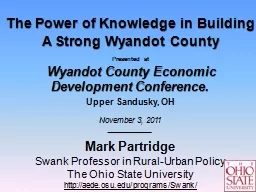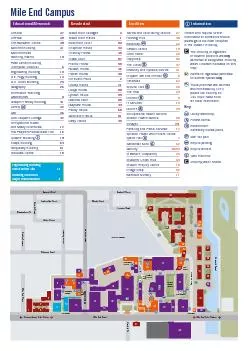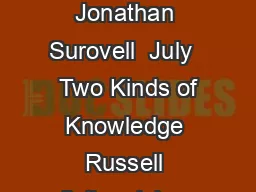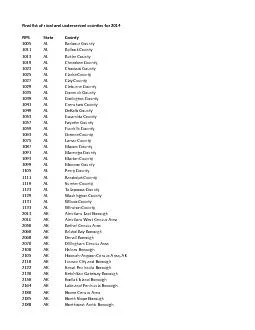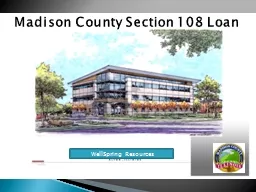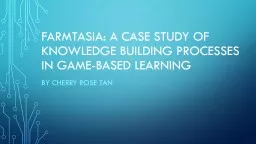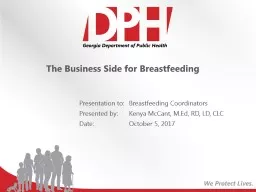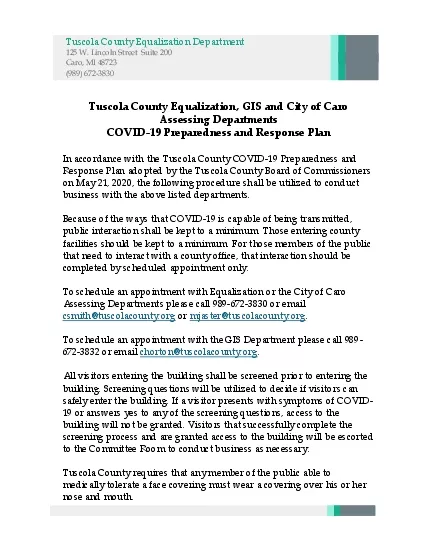PPT-1 The Power of Knowledge in Building A Strong Wyandot County
Author : ellena-manuel | Published Date : 2018-11-05
Presented at Wyandot County Economic Development Conference Upper Sandusky OH November 3 2011 Mark Partridge Swank Professor in RuralUrban Policy The Ohio State
Presentation Embed Code
Download Presentation
Download Presentation The PPT/PDF document "1 The Power of Knowledge in Building..." is the property of its rightful owner. Permission is granted to download and print the materials on this website for personal, non-commercial use only, and to display it on your personal computer provided you do not modify the materials and that you retain all copyright notices contained in the materials. By downloading content from our website, you accept the terms of this agreement.
1 The Power of Knowledge in Building A Strong Wyandot County: Transcript
Download Rules Of Document
"1 The Power of Knowledge in Building A Strong Wyandot County"The content belongs to its owner. You may download and print it for personal use, without modification, and keep all copyright notices. By downloading, you agree to these terms.
Related Documents

